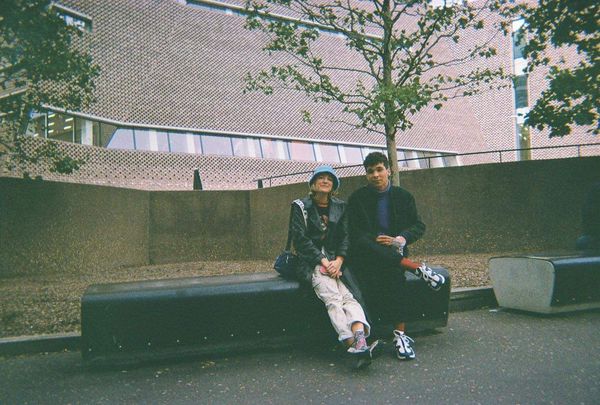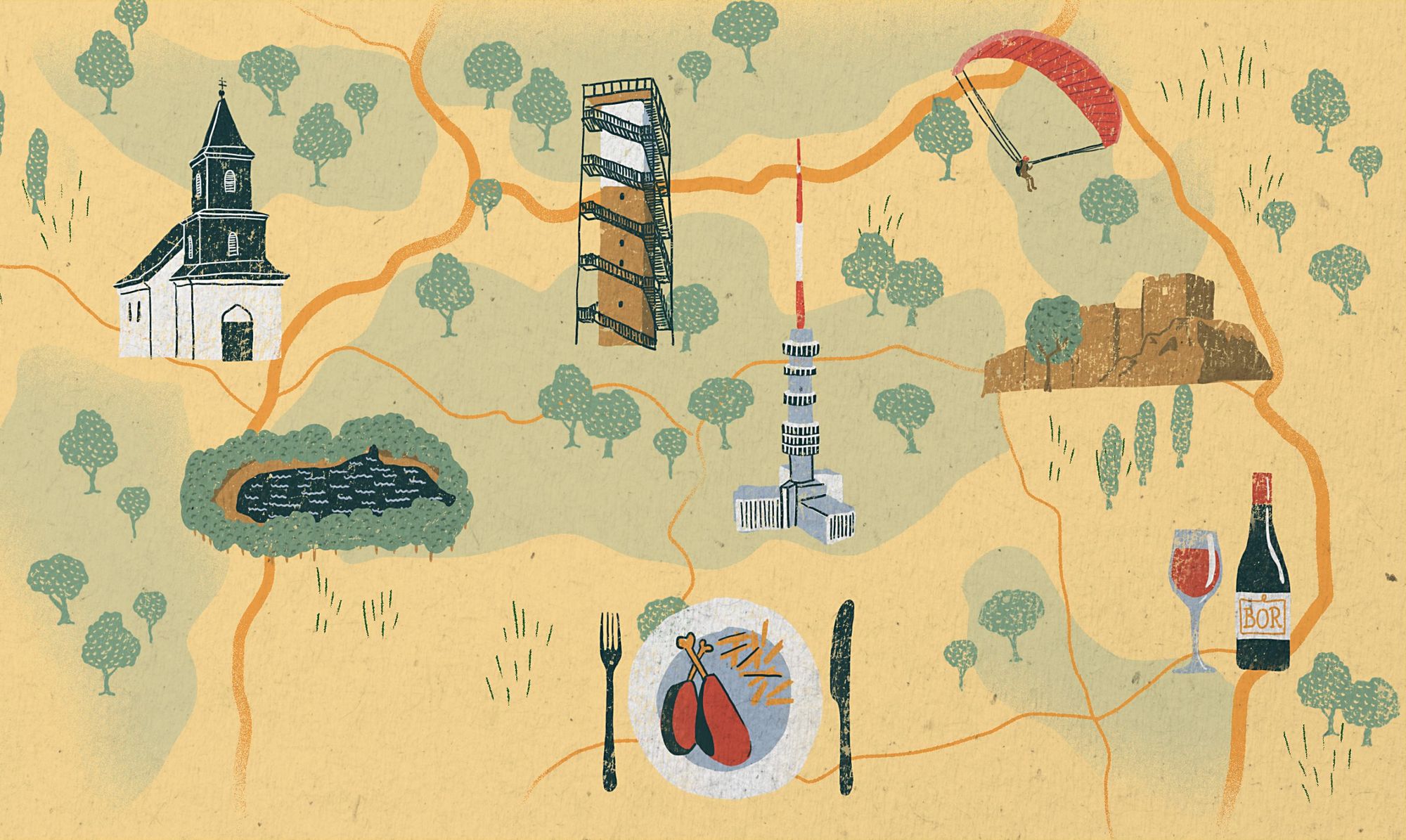The Mátra always offering cool and fresh air forms part of the North Hungarian Mountains and belongs to the largest young volcanic zone in Europe. This mountain range also gives home to Hungary’s two highest peaks, Kékes and Galyatető. Its diverse forests are accompanied by a rich fauna: walking in the beech forests, perhaps the various butterflies and colorful insects – including one of my favorites, the Alpine longhorn beetle – are what we notice the most.
Even though presumably there had already been human presence in the Mátra in the paleolithic era, significant archeological findings were only revealed when excavating the fortresses built after the Mongol invasion. In the 16th-17th century, the Mátra also fell prey to the siege of the Turks, and Pétervására, Kápolna and Gyöngyös served as the place of important battles during the Hungarian Revolution of 1848-49. The touristic relevance of the area also inspiring Sándor Petőfi increased in the past hundred years significantly –since then, it has been a popular spot of the fans of extreme sports and hiking both in summer- and wintertime.
We dedicated the second part of our Indulj el! (Get going!) series to the Mátra. We could only spend a few days in this region so that we can show you the marvels created either by nature or mankind to amaze visitors through the lens of our camera, but one thing is sure: the Mátra region is a genuine treasure.
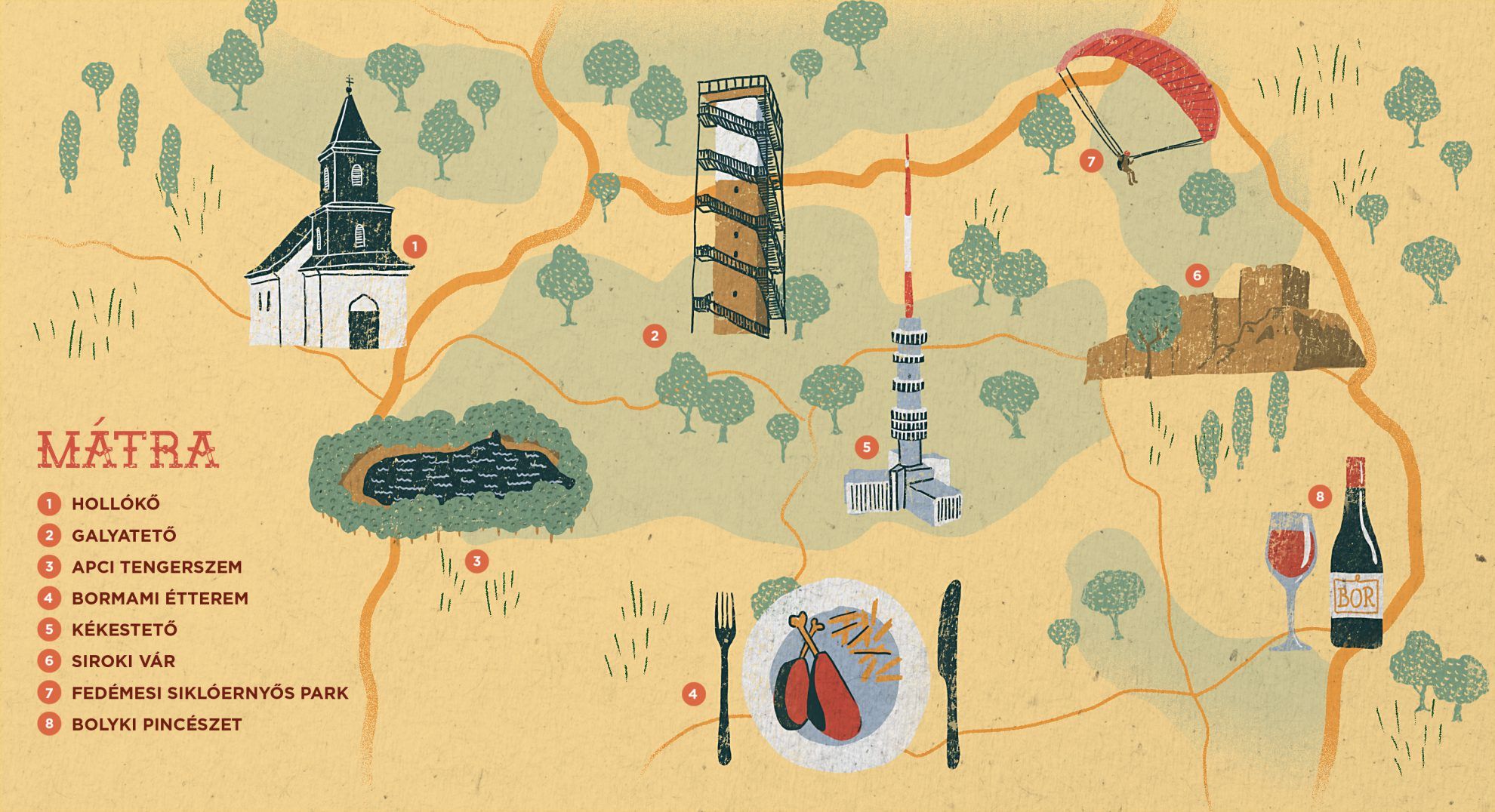
The tarn of Apc
The tarn of Apc also called the “eye of the Mátra” – actually the Széleskő quarry – used to function as an andesite mine, however, it does not only resemble a tarn in its looks, but is also considered the most spectacular one in Hungary. The lake with a crystal-clear water hides at the southern foot of the Mátra, near the Zagyva river, in a small village established in the Árpád era, with several tourist trails meandering on the high rocks next to it. The tarn of Apc is also perfect for a full-day of bathing, but as it is completely pristine, make sure you don’t leave without any food prepared and it is also important to take your waste when you leave.
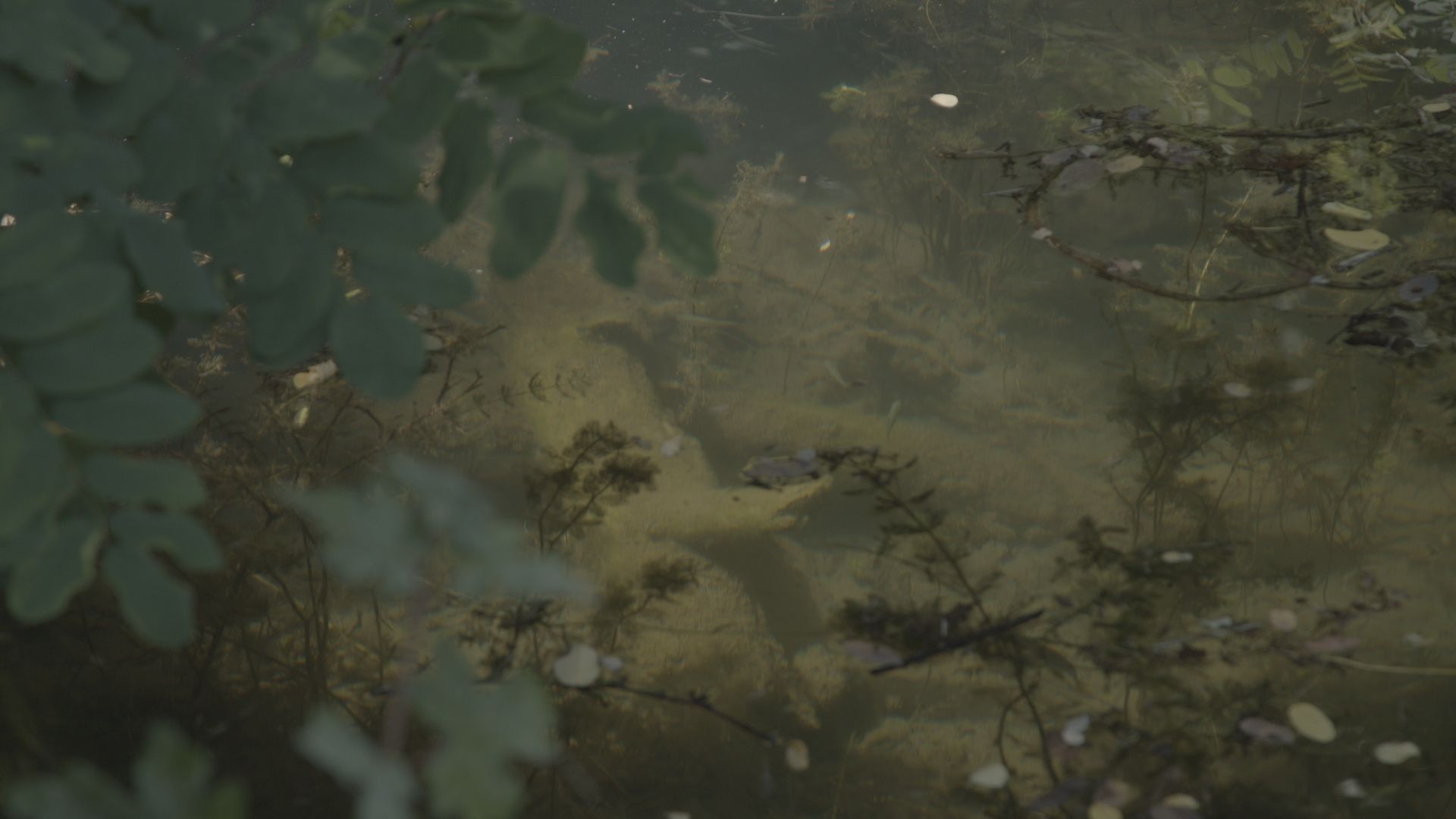
The fortress of Sirok
The fortress of Sirok rising to the sky between the Mátra and the Bükk mountains is the most significant ruin of the region, once again located on a steep volcanic summit. The fortress was built after the Mongol invasion, presumably in the early 13th century as a member of the border fortress system, but it became increasingly significant after the siege of Eger, as it used to function as the stronghold of the fortress of Eger. It was blown up by the imperialists in 1717, and since then it had stood abandoned until its reconstruction starting in 2010 and ceremonious handover in 2012. In addition to exploring medieval castle life, those interested in fortress tours can also take a walk in the underground system beneath the mountain.
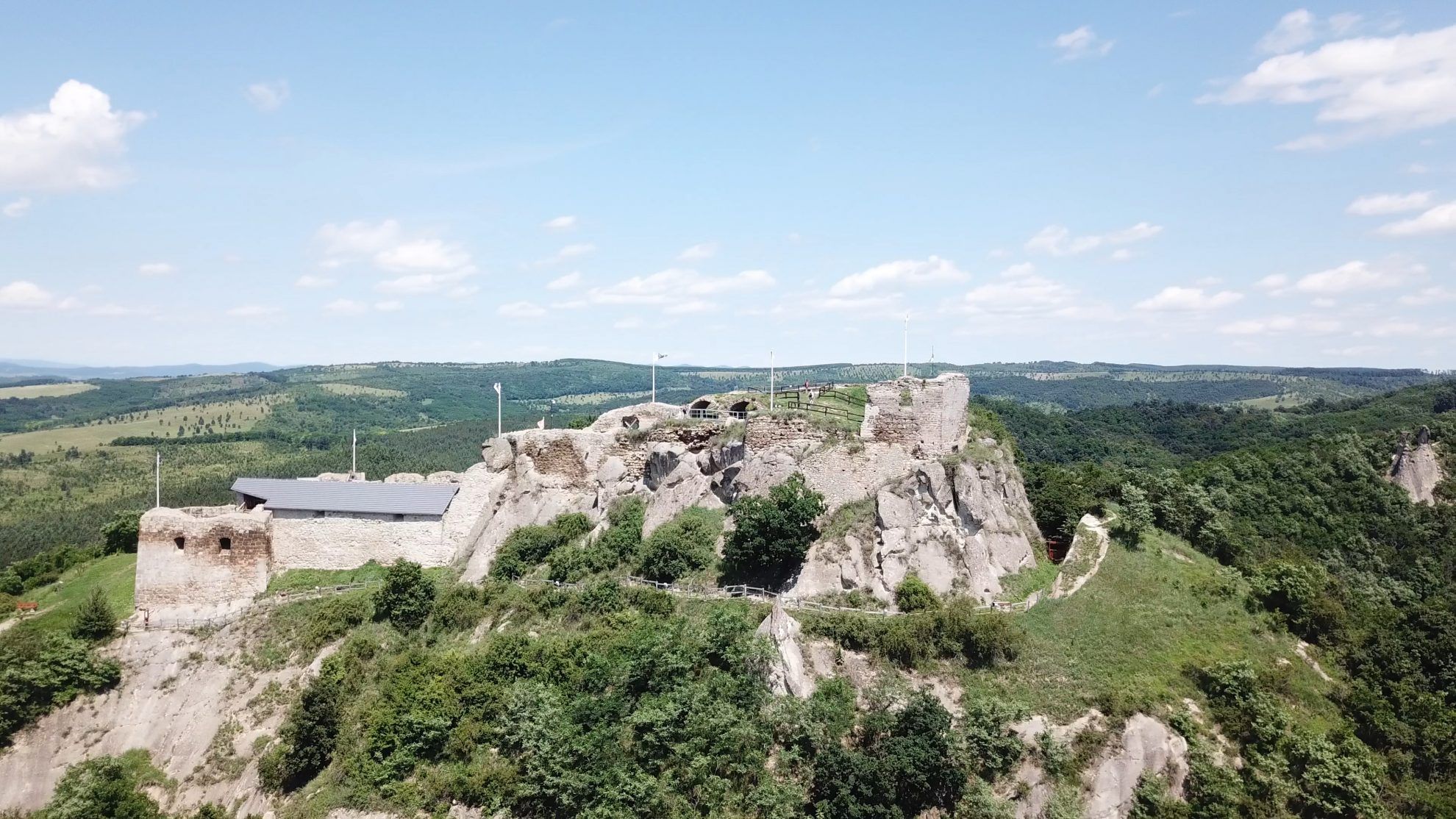
The ravine of the Páris creek
The small wooden board indicating the entrance of the ravine can be found amidst the summits of the Cserhát mountain, to the north from Nógrádszakál, directly on the Hungarian-Slovakian section marked by the Ipoly river, offering a clear view on the beginning of the valley. In the Badenian era – approx. 15 million years ago – a river used to meander here, and the petrified layers of its alluvion can still be seen while hiking. Even though the ravine of the Páris creek is only 350 meters long, its walls rise up to 20-30 meters above hikers, thus the name “the Palóc Grand Canyon”.
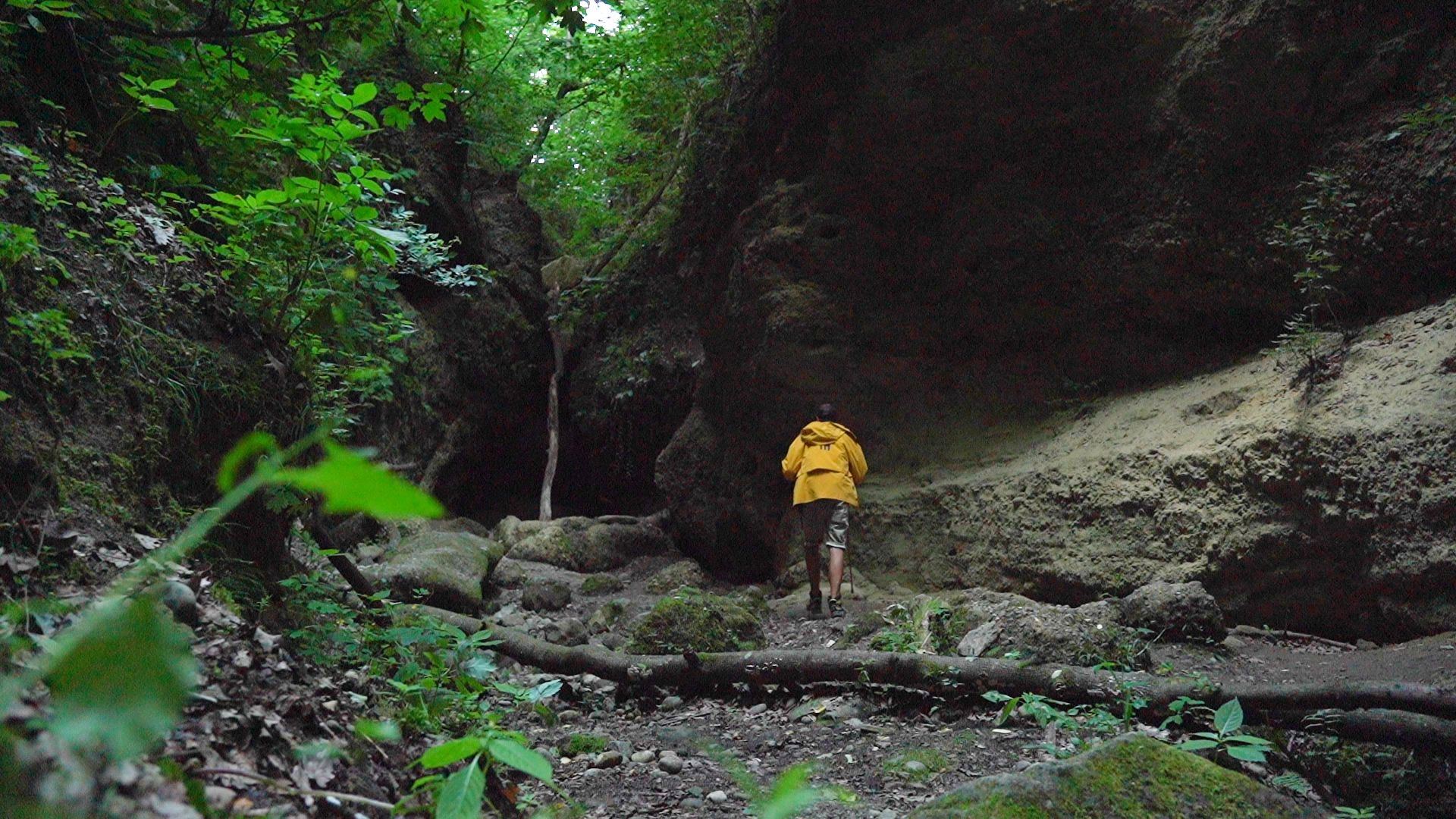
Kékes
With its height of 1014 meters above the level of the Baltic Sea, Kékes is the highest summit in Hungary. With its spectacular panorama and fresh air, it is a popular destination for skiers in the winter, and hikers in the summer, and it also forms part of the National Blue Trail. The highest summit of the country can be visited in the framework of both individual and organized tours, and the TV tower situated on top of it also serves as an observation point. Owing to its climate, the Kékes is a prominent health resort of Hungary: its sub-alpine climate – characteristic of summits above 800 meters – has a beneficial effect on asthmatic diseases and nervous exhaustion. The Kékestető sanatorium was bult here in 1933 leveraging this quality, once qualified as the most modern building in Hungary, based on the designs of Ybl award-winning architect László Miskolczy.
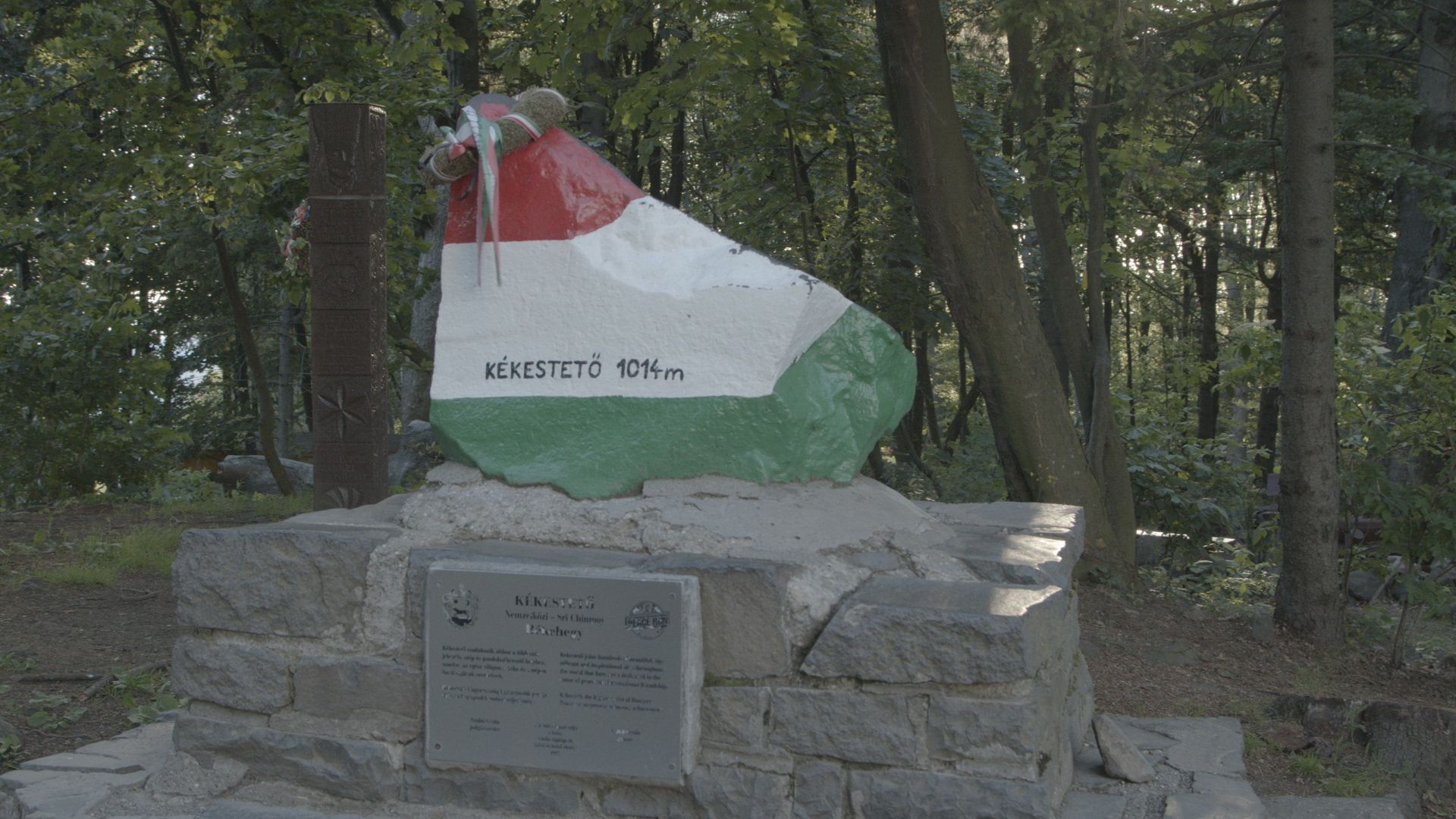
BoriMami
We were looking for contemporary culinary experiences at the foot of the Mátra, in Gyöngyös, this is how we ended up in BoriMami, a restaurant offering seasonal and locally sourced dishes. The wild board á la Mátra and the Palóc lamb are truly authentic meals on the rich and carefully composed menu, but you shouldn’t miss out on the desserts, either.
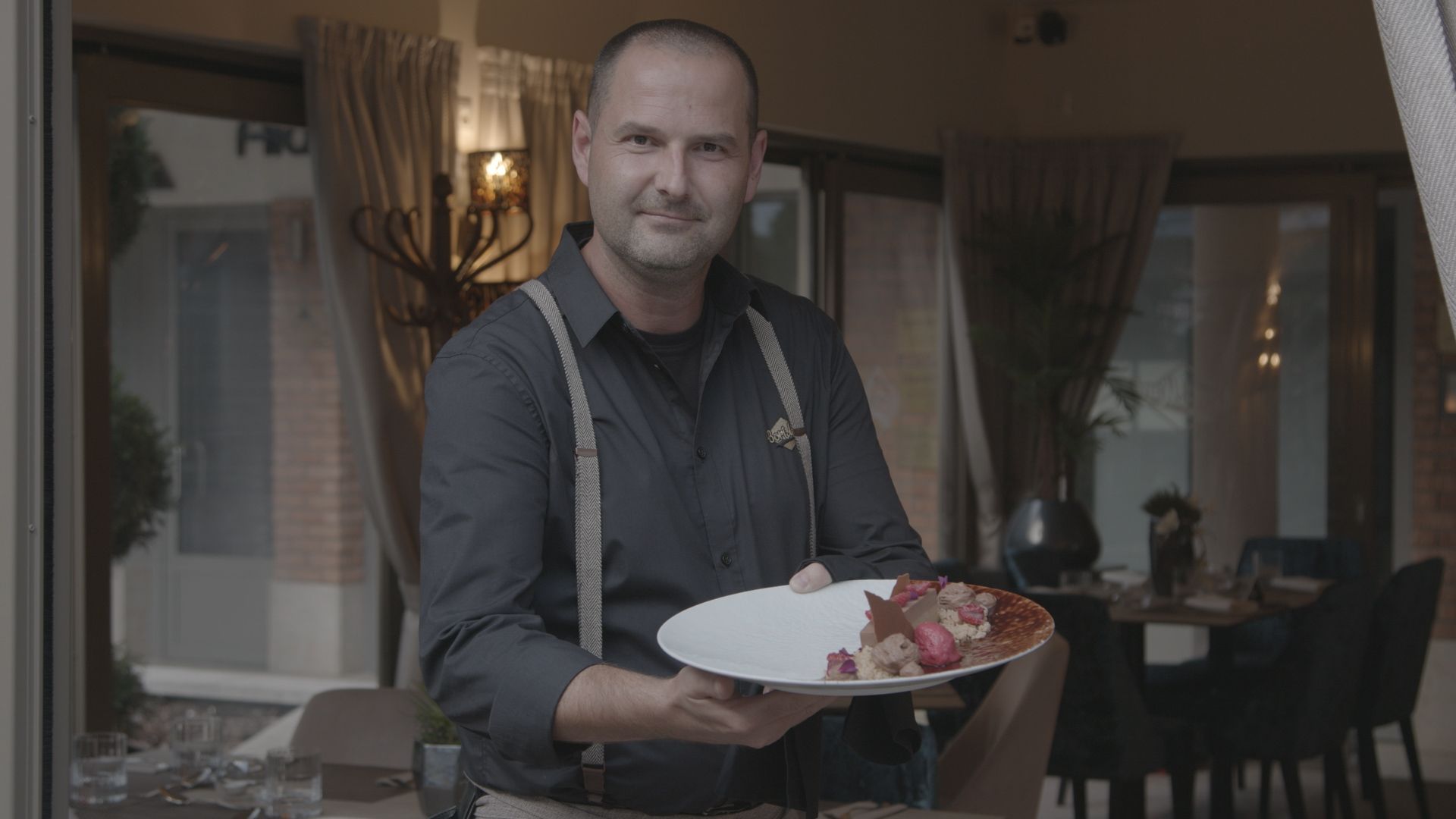
Take a look at the second part of the Indulj el! (Get going!) video series, we’ll show you where we’ve been!
Illustration: Róbert Farkas
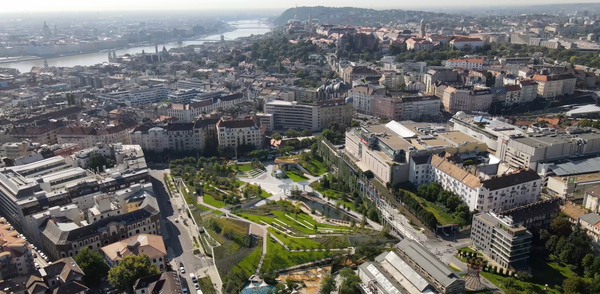
The new Millenáris Park opens today

E-bike in Scandinavian style
